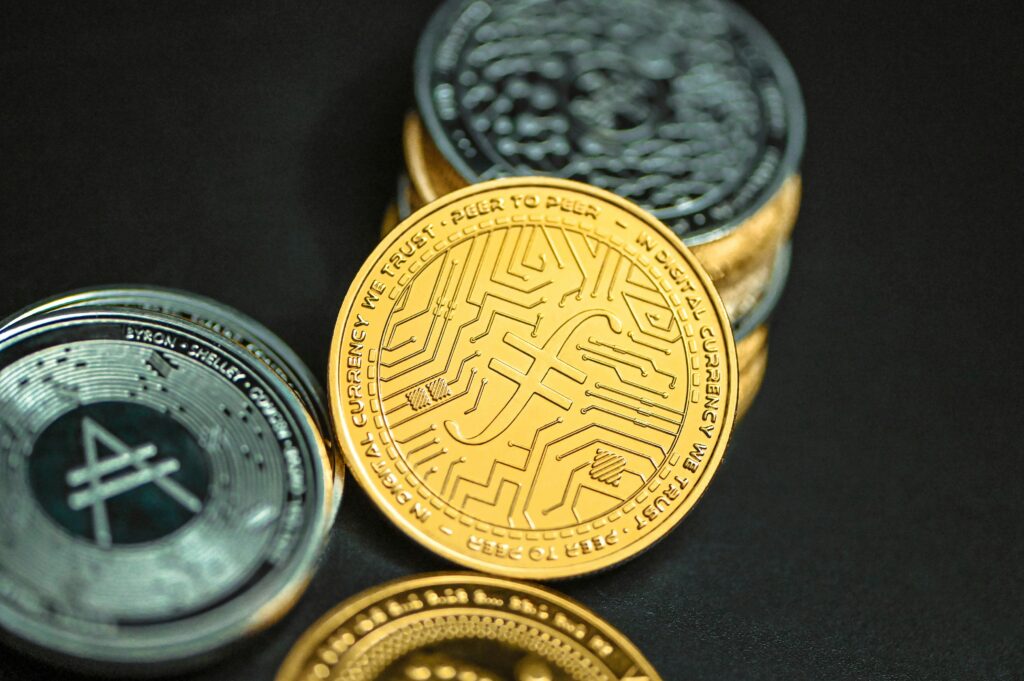Exploring the dynamic world of cryptocurrencies unveils a realm where innovation meets finance head-on. In my journey through the intricate landscape of decentralized finance solutions, I’ve encountered a wave of crypto projects reshaping the future of banking and transactions. These projects, laser-focused on decentralization, are revolutionizing how we perceive and interact with traditional financial systems.
As I delve deeper into the realm of crypto projects centered on decentralized finance solutions, I uncover the disruptive potential they hold in democratizing access to financial services globally. From decentralized exchanges to lending platforms, these projects are not just trends but transformative forces driving the evolution of finance. Join me as we navigate the exciting terrain of crypto projects shaping the decentralized finance ecosystem.
Overview of Decentralized Finance (DeFi)
The Rise of DeFi in the Crypto Space
In the rapidly evolving landscape of cryptocurrencies, Decentralized Finance (DeFi) has emerged as a revolutionary concept, offering disruptive solutions to traditional financial systems. DeFi projects leverage blockchain technology to create decentralized platforms for various financial services, such as lending, borrowing, and trading, without the need for intermediaries like banks. These projects are gaining significant traction due to their transparent, secure, and accessible nature, transforming how individuals engage with financial services globally.
Key Components of DeFi Systems
Decentralized Finance (DeFi) systems consist of various key components that enable their operation and success in the crypto space. Smart contracts play a pivotal role in automating processes, executing transactions, and ensuring data integrity within DeFi platforms. Liquidity pools facilitate decentralized trading and lending by allowing users to directly contribute their assets, ensuring sufficient liquidity for transactions. Decentralized exchanges (DEXs) enable users to trade cryptocurrencies in a peer-to-peer manner, eliminating the need for centralized exchanges and offering greater control over assets. These components work synergistically to build a robust ecosystem that empowers users and reshapes traditional financial paradigms.
Major Crypto Projects in DeFi
- Ethereum and DeFi
I’ll delve into Ethereum, a pioneer in the DeFi space, allowing developers to create smart contracts for various financial applications. These smart contracts run on the Ethereum blockchain, enabling decentralized lending, borrowing, and trading through platforms like Compound and Aave. Ethereum’s robust infrastructure and large developer community have made it a cornerstone of the DeFi ecosystem. - Other Prominent DeFi Platforms
Exploring beyond Ethereum, other notable DeFi platforms like Binance Smart Chain (BSC) and Solana have gained traction for their high-speed transactions and low fees, attracting users and developers alike. BSC hosts projects such as PancakeSwap, a decentralized exchange, while Solana’s scalability has powered projects like Serum, a decentralized exchange built on its network. These platforms offer unique features and functionalities, contributing to the vibrant landscape of decentralized finance solutions.
Innovations and Technologies in DeFi Projects
Smart Contracts and Automated Transactions

In DeFi projects, smart contracts play a pivotal role in automating transactions, removing the need for intermediaries, and enhancing security. These self-executing contracts enable seamless peer-to-peer transactions by automatically enforcing the terms of an agreement when predefined conditions are met. They are the backbone of various DeFi platforms, ensuring trustless interactions and reducing the risk of human error.
Enhancements in Blockchain Security
Blockchain security in DeFi projects has seen significant enhancements to mitigate risks and vulnerabilities. With the implementation of robust encryption techniques, multi-signature protocols, and decentralized consensus mechanisms, DeFi platforms have bolstered their security measures. These enhancements aim to protect user funds, prevent unauthorized access, and ensure the integrity of transactions within the decentralized finance ecosystem.
Challenges Facing DeFi Projects
DeFi projects are at the forefront of innovation, but they face several challenges that need to be addressed for sustainable growth and adoption.
Scalability Issues
Scaling DeFi projects to meet growing demand while maintaining efficiency is a significant challenge. High transaction fees and network congestion on popular blockchain networks like Ethereum can hinder the scalability of DeFi platforms. As the number of users and transactions increases, the existing infrastructure may struggle to handle the load, leading to delays and increased costs for users. Implementing effective scalability solutions, such as layer 2 solutions or migrating to alternative blockchains with higher throughput, is crucial for overcoming these challenges.
Regulation and Compliance Challenges
Regulation and compliance pose significant challenges for DeFi projects seeking mainstream adoption. The decentralized nature of DeFi platforms and the lack of centralized governance structures make it difficult to comply with existing financial regulations. Regulatory uncertainty, particularly regarding Know Your Customer (KYC) and Anti-Money Laundering (AML) requirements, presents a barrier to broader DeFi adoption. Balancing innovation and compliance is essential for DeFi projects to gain legitimacy and foster trust among users and regulatory authorities. Developing frameworks for self-regulation and engaging proactively with regulators are key steps towards addressing these challenges.
Future Predictions for DeFi
Trends to Watch in DeFi Development
In the realm of DeFi development, it’s essential to keep an eye on emerging trends that could shape the future of decentralized finance. One key trend to observe is the integration of decentralized autonomous organizations (DAOs) within DeFi projects. These entities allow for community governance and decision-making, fostering a more democratic and decentralized ecosystem. Another significant trend is the rise of cross-chain interoperability solutions, aiming to enhance connectivity and facilitate seamless asset transfers across different blockchains. By monitoring these trends, I can anticipate the evolution of DeFi towards increased efficiency and accessibility for users worldwide.
Potential Market Growth Scenarios
When considering potential market growth scenarios for DeFi, various factors come into play that could drive the expansion of decentralized finance solutions. One scenario involves the continued collaboration between DeFi projects and traditional financial institutions, leading to increased adoption and integration of decentralized technologies within existing financial systems. Another growth scenario revolves around technological advancements such as Layer 2 scaling solutions and improved security measures, attracting more users and capital to the DeFi space. By envisioning these growth scenarios, I can foresee a future where DeFi plays a crucial role in reshaping the financial landscape on a global scale.


